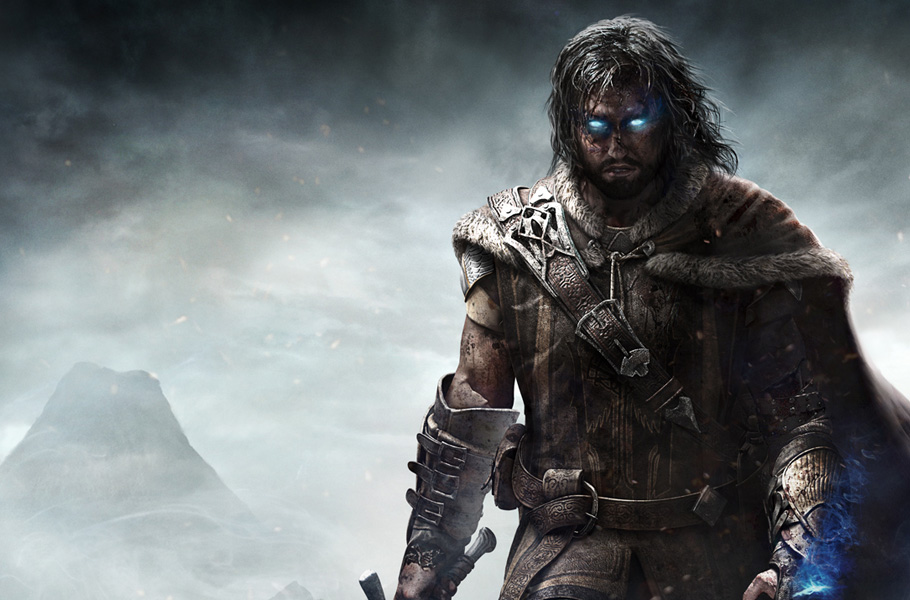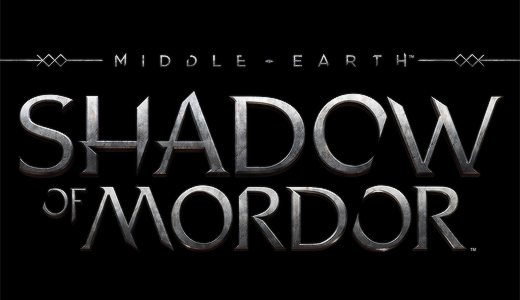Our good friend and exceptional writer, Joseph Bradford, happens to be the News Director for Quest Gaming Network, a site dedicated to covering gaming news through webcasts and online articles. Recently, Joe attended E3, where he had the opportunity to review the newly released game, Middle-earth: Shadow of Mordor. Being the knowledgeable Tolkien fan he is, Joe offered to share his thoughts on the game concerning how canon it actually is. How much of the game stays true to Tolkien and which parts deviate are just some of the points Joe discuses in his review titled, Shadow of Mordor: To be or not to be… Canon?
As I sat down to write my article for The Quest Gaming Network, having just experienced Shadow of Mordor at E3, I was conflicted. Conflicted is actually putting it mildly. I was simply torn in two. One part of me loves the idea behind the game. The other part of me simply cannot reconcile the fact that in order to create this game, one of my favorite fictional worlds will be torn asunder to do so… in a sense.
It all comes down to canon. What is canon in The Lord of the Rings and its surrounding legendarium? Where do we draw the line between something left unsaid by Tolkien and extensive creative liberties? Is it the simple act of adding to the canon that make Tolkienists cringe, or the fact those additions are proclaimed as such? I think it’s both, personally.
When we look at the adaptations of The Lord of the Rings, especially the video game licenses, we need to keep in mind that there are two different licenses at play: One for the movie franchise, and another for the literary works. We see this difference shown perfectly with The Lord of the Rings Online (Lotro) and the action RPG The Lord of the Rings: War in the North (WitN). Both are games created in the same world, both have very different art styles and narrative direction. Lotro attempts to augment the story by allowing you to intersect the path of The Fellowship, take part in some of the greater battles in the story (such as the Battle of the Hornburg); but it does so in a way that is narrative driven, much like the books. WitN seeks to showcase a different story, but one driven by carnage as you hew limbs from bodies throughout the game in a carnal show of elegant brutality. But, both are inherently simple acts of sub-creation on the original narrative. And so in a sense, both games are inherently Tolkien-esque.
There is a glaring difference between what these games have proclaimed to be, and what the developers at Monolith have said regarding their upcoming stealth action game, Middle-earth: Shadow of Mordor. Not once during the development of WitN or Lotro have we heard devs say in interviews that the game is canon. We have heard them say that they will be trying to stay as true to the books, but no one can tell me an Elf using a staff imbued with magical properties to strike down her foes with bolts of power is truly canon. And WB never came out and said so. It was simply an adaptation of a beloved story. They were attempting to tell yet another tale set in the world of Arda.
The stories told in Lotro have been questioned concerning their accuracy with the lore of the series. It is this game that I feel holds true the most to the literary legacy of the world. The story of the game is told as if you were reading a book and as such it hearkens back to our first encounters of the larger story: through reading. Try as they might to talk away the lore-breaking qualities of creating “Beornlings” as a class in the game, the fact is they also have not come out to say that it is completely true to the canon as well. In an interview with GamesBeat a few weeks ago, Monolith has done just that.

Again, as stated before, the simple act of sub-creation is something we should all cherish. Tolkien himself, in creating the world of Arda, was sub-creating. We sub-create whenever we tell a fairy tale to our children off the top of our head, write a novel or short story, or create the next great virtual world in a video game. Every piece of art we conjure up in our imagination is an act of sub-creation.
Really, using a wraith to revive Talion to exact revenge upon Sauron? Not lore-friendly, but as a world that has become used to creative license, it can be lived with. I mean, how many times in The Fellowship of the Ring have we heard of large, land-faring turtles roaming the tundra of Angmar? They’re in Lotro.
I’ve had people as well ask if I get worked up over the fact that as a wraith, Talion can still interact with the physical world. To that, I would simply remind them that a Ringwraith was able to stab a mortal Hobbit on Weathertop just fine, so that has been established as canon.
Other people have asked whether it’s Talion being able to coexist in both the physical and shadow world when using his wraith abilities. These abilities are pretty awesome, but it’s not that fact that has me riled up. Glorfindel is the example of this within the books. When Frodo looks upon Glorfindel, he is able to see him as he looks in the Shadow Realm – the world that Frodo enters while wearing The One Ring. He is able to see the Elf-lord as such thanks in part to the wound from the Morgul Blade, but also because he himself has been to the Shadow Realm. Tolkien wrote that the Calaquendi, or the High Elves, exist in both realms at once –
“And here in Rivendell there live still some of his chief foes: the Elven-wise, lords of the Eldar from beyond the furthest seas. They do not fear the Ringwraiths, for those who have dwelt in the Blessed Realm live at once in both worlds, and against both the Seen and the Unseen they have great power.” The Fellowship of the Ring – Book 2 Chapter 1 “Many Meetings
So, since a wraith would exist in the Shadow Realm inherently, by becoming part of Talion, the Ranger would therefore exist in both as well.
My reasoning for being upset is when a game developer, or anyone who seeks to augment the rich history written by Tolkien calls it canon, especially when anyone can see it is not. So, why do these creators see the need to make sure people understand that this fits with the world? Because if they don’t, it would diminish the work they are doing to a degree where it might not be consumable.
Let’s face it – why has Turbine bothered to tell us that they are consulting Tolkien Enterprises regarding the Beornling class? Fear that creating something extra to the lore might cause fans to stop paying for their game. The same can be said with Shadow of Mordor. If word got out that Tolkien scholars were to state that the expositional centerpiece of their game were to not fit with the lore of the world around it, people would simply see this as a rip-off and blatant attempt to cash in before WB loses the license. So they too have consulted Tolkien Enterprises when creating the story for the game, to make sure this fits the world. At the same time, they are preying upon the general publics laziness to check sources as well.
Tolkien Enterprises sounds official, and it should since it is a real thing. Tolkien Enterprises is a company set up by the Saul Zaentz Company to manage the licensed products for The Lord of the Rings franchise. They handle everything from the movies to the slot machines being fought over in court. People don’t see this, but rather they see a name with Tolkien in it, think the developers are contacting the Tolkien Estate, and that the literary heritage is being upheld.
Tolkien Enterprises are the same people who allowed Rhosgobel Rabbits, I might add.
So, in the question, “To Be Canon or Not To Be Canon?”, you want to be, if for nothing more than the recognition that comes with saying you are. But, do you really need to be? My personal issue with the development of the game is simply because they are calling it canon. Not that they revived a mortal man using a wraith, something you would likely never see in a Tolkien-written work. Not because when confronted in a livestream last Friday night they wouldn’t outright say you won’t fight Sauron at the end of the game. All of this I could write off as creative license, if they stressed that this is their story set in this world. But they’re not.
By calling it canon, they are placing it in the same realm as what Tolkien himself wrote, adding it to the history of Middle-earth. By calling it canon, we all have to agree that a wraith-infused Gondorian Ranger created an Orc army to exact revenge on a being that can’t even take physical shape at this period in history. By calling it canon we have to recognize that the story of Talion is as important to the overarching story that crosses the breadth of Arda, placing it in the same vein as The Children of Hurin and the struggles of Frodo Nine-fingered and Samwise the Brave.
Regardless of how great this title is, from a purely gaming standpoint, I refuse to do so.




20 Comments